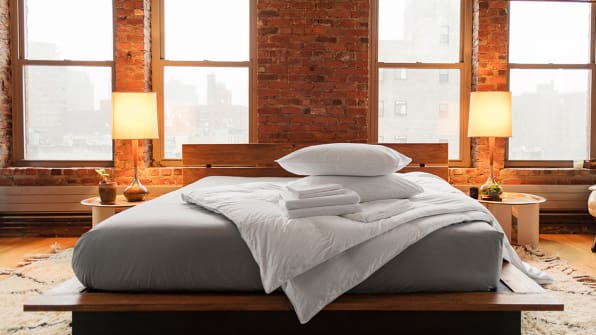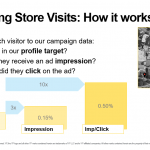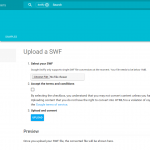How This Bedsheets Startup Figured Out The Right Way To Disrupt Sleep Patterns
There was a time not that long ago when buying high-quality bedsheets was a major investment. Walk into Nordstrom or Barneys, and you could easily drop $750 or more on sheets from Frette, Sferra, or Loro Piana. But over the last three years, a transformation has begun to democratize the process. Brands like Brooklinen, Parachute, and Boll & Branch are using clever direct-to-consumer business models that bring high-threadcount, long-staple cotton sheets to consumers at prices that start at under $100.
This new flock of bedsheets startups has been growing fast—expanding their product ranges and generating millions of dollars in revenue—and none has seen more impressive stats than Brooklyn-based Brooklinen. On the eve of its third anniversary, the company is only just now taking on its first external funding, a $10 million Series A round led by FirstMark Capital. The brand first came to the market in April 2014 with a Kickstarter campaign that raised $237,000, but after that point, its wife-and-husband cofounders say they were committed to bootstrapping the company.
“We wanted to be very cautious about how we grew,” says Vicki Fulop, who cofounded the company with her husband, Rich. “It was important to us to understand and deliver exactly what our customer wanted, rather than just keep churning out new products for the sake of doing so.”
The strategy has been working. The Fulops say Brooklinen has grown 10 times each year since it launched three years ago, amassing 150,000 customers and a team of 30, and hitting a $25 million revenue mark last year. “We’ve already surpassed that amount this year,” says Rich. “And we’re only in March.”
As they think about the brand’s success, they attribute their growth to several factors.

Consider Underserved Customers
Men, it turns out, have been terribly underserved by the bedsheets industry. The Fulops discovered that while men obviously sleep on sheets every night, they generally don’t feel comfortable buying sheets in a store. This might have to do with antiquated norms from an era when women were responsible for domestic purchases. “The industry knew how to market the products to women, but not to men,” Rich says.
To make men more comfortable, they designed a range of products that were gender neutral. They don’t have a single pair of pink or floral sheets on the site. Instead, sheets come in grays, creams, and blues, in simple stripe and windowpane patterns. Importantly, every item from the store can be easily mixed and matched with other items. “That was crucial: Guys don’t want to be sitting there wondering whether one fussy pattern matches another,” Rich explains. “They want to pick a couple of products and know they can’t screw up.”
Thanks to these efforts, Brooklinen’s customer base is evenly split between men and women. The site is also popular among millennial couples buying for their first home together, since the aesthetic doesn’t feel intimidating or overwhelming to the male half.

Data, Data, Data
From the very start, the Fulops have been obsessive about collecting as much data as possible from customers. They’re able to assess which products are most popular, then break down their analysis by region, gender, and time of year. All of this helps them determine how much of each product to make and how to market the product.
But more interestingly, they boost their numerical data with qualitative data. More than half of their staff is involved with customer service of some kind, and when a pair of sheets is returned, these employees ask the customer what products they would have preferred: Was there a particular pattern they would have liked better? A color selection they were looking for?
The approach has worked remarkably well. It was through this kind of in-person feedback that they discovered customers were looking for a slightly more feminine pattern, which is how they introduced polka dots—now a top-selling product. Customers also kept asking about where to buy good-quality pillows, so the Fulops decided to make their own range. Those have also been popular.

Save Money In Creative Ways
A detailed analysis of its customer base has helped shape Brooklinen’s aesthetic. But this has also translated into a more cost-efficient business model. The Fulops discovered, for instance, that their customers didn’t care for embroidery, which is very expensive. So they decided they didn’t need to incorporate it into their designs and could pass the savings on to their customers.
They also discovered that their customers weren’t particularly concerned about whether the sheets were made from organic cotton, which is more expensive to purchase. (This is the focus of Boll & Branch’s business.) Instead, customers cared about how soft the products were and whether they were made in fair-trade facilities, so the Fulops have focused on these product aspects.

Specialize In One Space
As Brooklinen has grown, it’s had to think about how to grow its product range. Some of its competitors have expanded into other categories. Parachute, for instance, now has a full bath range and is set to make products for the entire home; Boll & Branch, for its part, has expanded into baby products and scarves.
But Brooklinen wants all of its new products to have something to do with sleeping. Besides sheets, it offers comforters, pillows, and blankets, and has recently introduced a range of candles designed for different moments of the day, from waking up, to taking a nap, to preparing for sleep. This, the Fulops believe, will help Brooklinen stand out as the direct-to-consumer bedlinen market matures and each brand develops a more distinct identity.
Meanwhile, they’ll use their new infusion of cash to continue to develop products that will enhance the sleep experience. “We want to own the bedroom,” Vicki says. “It’s a very deliberate strategy to prompt people to think about us when they want to outfit their bedroom from start to finish.”
Update: An earlier version of this story stated incorrectly the number of Brooklinen’s customers due to an error from its PR.
Fast Company , Read Full Story
(44)














